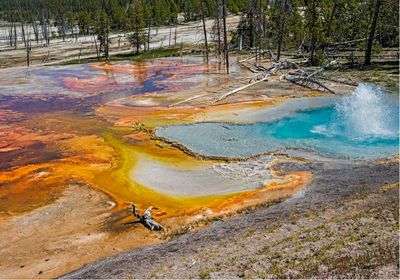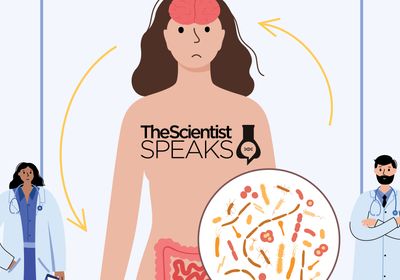ABOVE: © iStock.com, Gerald Corsi
Earth’s first life forms eventually took one of three different paths, forming the domains of Eukarya, Bacteria, and Archaea. These domains have been evolving separately for billions of years.
Recent evidence suggests that the boundaries between the three domains are not so clean. Studies show that members of different domains can traffic genes back and forth, potentially fast-tracking evolution. How they do so remains unknown, but a study published today (November 16) in Science Advances provides a possible clue with the first report that archaea have integrons—gene exchange machinery previously thought only to exist in bacteria. This may allow microbes from the two domains to swap information and instantly acquire new functions.
“We’ve known for a while that there are a lot of genes that bacteria and archaea exchange,” says Olga Zhaxybayeva, an evolutionary biologist at Dartmouth College who was not involved in the study. If integrons turn out to be widespread in archaea, “it could be another mechanism for microbes to exchange the traits they need.”
See “Horizontal Gene Transfer Happens More Often Than Anyone Thought”
Gene exchange can help bacteria survive in new, harsh environments, or strengthen their symbiotic relationships with plants. Study coauthor Timothy Ghaly, a microbiologist at Macquarie University in Sydney, says that he and his team had always been interested in how integrons allow bacteria to take on novel, sometimes incredibly useful traits such as antibiotic resistance.
It was unknown if archaea have integrons, partly because they’re hard to study, says Ghaly, as they live in a variety of difficult-to-access environments, from our guts to muddy, sulfuric hot springs. But recent advances in genomic sequencing, in particular a technique used to generate what are known as metagenome-assembled genomes (MAG), have allowed researchers to piece together archaea genomes from environmental samples.
Ghaly and his team were curious if the prokaryotes might have similar gene exchange mechanisms to their distant bacterial relatives. If very different groups of organisms, like bacteria and archaea, are swapping genes, that could potentially help “the microbe that’s receiving a new function to occupy a new niche, and could have impacts on human and animal and plant health,” he adds. “Integrons are a big facilitator in the antibiotic resistance crisis . . . There are a lot of gene cassettes that are virulence genes or antibiotic resistance genes that could affect us negatively.” Some human methanogenic archaea are highly resistant to antibiotics, for example.
Bacteria swap genes in the form of a gene cassette that consists of a single gene and a gene recombination site called AttC. When they encounter stressful circumstances, bacteria exchange these cassettes like mixtapes, plugging them into and taking them out of their genomes.
To begin the DNA transfer process, bacteria use integron integrase (IntI), a protein in the tyrosine kinase family. Intl induces recombination between the gene cassette’s AttC site and a region on the bacterium’s genome called an integron attachment site, or AttI. Bacteria end up with a long string of gene cassettes, strung together by AttC sites, in their genomes.
On the bacterial genome, integrons consist of a gene for an IntI protein, Int, followed by a series of integrated gene cassettes. In the new study, the researchers screened all publicly available genomes of archaea, 95 percent of which were MAGs. They searched for AttC-like sequences and for sequences coding for IntI-like proteins. The researchers say they haven’t found a way to predict AttI sequences, and thus didn’t look for them.
In the nearly 6,700 archeal genomes they scanned, the researchers found 75, spanning nine phyla, that had evidence of integrons. All of the archaeal integrons had the same structure and components as bacterial integrons.
Based on the sequences they found, the researchers then synthesized archaeal AttC-containing cassettes and found that, when exposed, E. coli bacteria incorporated these cassettes into their genomes.
“It’s always interesting to find [horizontal gene transfer] in new organisms,” says Zhaxybayeva. She adds that, in the future, it would be useful to have a complete genome of a cultured archaea, as opposed to a constructed MAG as the team used in this study, and begin to piece together the mechanism behind the gene transfer. She’s particularly interested in whether archaea in the human gut have integrons, “and whether they participate in the exchange around antibiotic resistance.”
Clarification (November 17): The sentence about metagenome-assembled genomes has been changed to reflect that this term refers to the genomes generated, not to the technique used to generate them.






